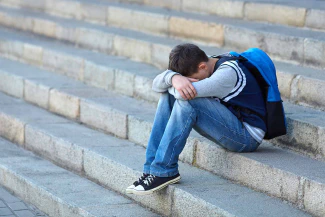Ensuring School Safety: A Comprehensive Guide

Discover effective strategies and measures to ensure the safety of students and staff in schools.
Understanding the Importance of School Safety
Ensuring the safety of students and staff in schools is of utmost importance. School safety not only provides a secure environment for learning but also promotes a sense of well-being among students, teachers, and parents. When students feel safe at school, they are more likely to focus on their studies and excel academically. Additionally, ensuring school safety helps prevent incidents of bullying, violence, and other harmful behaviors, creating a positive and inclusive learning environment for everyone.
By understanding the importance of school safety, educational institutions can take proactive measures to identify potential risks and implement effective strategies to mitigate them. School administrators, teachers, and parents all play a crucial role in ensuring the safety of students. Together, we can create a safe and nurturing environment where students can thrive and reach their full potential.
Creating a Secure Physical Environment
Creating a secure physical environment is an essential aspect of ensuring school safety. Schools should have proper security measures in place to protect students and staff from external threats. This includes installing surveillance cameras, implementing access control systems, distributing easy-access duress systems to staff, and conducting regular security assessments to identify vulnerabilities.
Furthermore, schools should have a clear emergency response plan in place. This plan should outline procedures for various emergency situations, such as lockdowns, evacuations, and medical emergencies. Regular drills and training sessions should be conducted to ensure that students and staff are prepared to respond quickly and effectively in case of an emergency.
In addition to external threats, schools must also address internal safety concerns. This may involve implementing policies and procedures to prevent unauthorized individuals from entering the premises, as well as promoting a culture of respect and inclusivity to prevent incidents of harassment or bullying.
By creating a secure physical environment, schools can provide a safe and supportive atmosphere for students to learn and grow.
Implementing Safety Policies and Procedures
Implementing safety policies and procedures is crucial for maintaining a safe learning environment. Schools should have clear guidelines in place to address various safety concerns, such as bullying, violence, and substance abuse. These policies should be communicated effectively to students, parents, and staff to ensure everyone understands their roles and responsibilities in maintaining a safe school environment.
Schools should also establish protocols for reporting and responding to safety incidents. Students and staff should feel comfortable reporting any potential threats or concerns, knowing that their information will be taken seriously and appropriate action will be taken. Promptly addressing safety concerns not only helps prevent further incidents but also creates a culture of trust and accountability within the school community.
Regular training sessions should be conducted to educate students and staff on safety procedures and protocols. This may include workshops on conflict resolution, anti-bullying initiatives, and emergency response training. By equipping individuals with the necessary knowledge and skills, schools can empower them to take an active role in maintaining a safe and secure learning environment.
Implementing safety policies and procedures is an ongoing process that requires collaboration and continuous improvement. Schools should regularly review and update their policies to adapt to changing safety concerns and ensure the effectiveness of their strategies.
Promoting Mental and Emotional Well-being
Promoting mental and emotional well-being is an integral part of ensuring school safety. Students who are mentally and emotionally healthy are better equipped to handle challenges and setbacks, and are less likely to engage in risky behaviors. Schools should prioritize the well-being of their students by providing access to mental health resources and support services.
Creating a positive and supportive school climate is essential for promoting mental and emotional well-being. This can be achieved through various means, such as implementing anti-bullying programs, fostering positive relationships between students and teachers, and creating a culture of inclusivity and acceptance. Schools should also prioritize mental health education, teaching students about stress management, coping mechanisms, and the importance of seeking help when needed.
Additionally, schools should have a designated team of professionals, such as school counselors or psychologists, who can provide support and intervention for students facing mental health challenges. These professionals can offer counseling services, conduct assessments, and collaborate with external resources to ensure students receive the help they need.
By promoting mental and emotional well-being, schools can create a nurturing environment where students feel valued, supported, and empowered to succeed.
Building Strong Partnerships for Safety
Building strong partnerships for safety is essential for maintaining a safe school environment. Schools should collaborate with various stakeholders, such as parents, law enforcement agencies, and community organizations, to create a comprehensive safety network.
Parents play a crucial role in ensuring the safety of their children. Schools should actively involve parents in safety initiatives by providing regular updates, conducting workshops, and seeking their input on safety policies and procedures. By working together, schools and parents can create a unified approach to school safety, ensuring that students are protected both at home and in the educational environment.
Collaborating with local law enforcement agencies can also enhance school safety. Schools should establish open lines of communication with law enforcement personnel, who can provide valuable insights, resources, and support in addressing safety concerns. Regular joint trainings and drills can also be conducted to improve coordination and response in case of emergencies.
Engaging community organizations and local businesses can further strengthen school safety efforts. These organizations can provide resources, expertise, and funding for various safety initiatives, such as installing security systems, organizing awareness campaigns, and offering training programs.
By building strong partnerships for safety, schools can create a network of support that enhances the overall safety and well-being of students and staff.
For more information about school safety solutions, visit 911cellular.com
Tags: Panic buttons Preventing school shootings School safety Mass notification system


